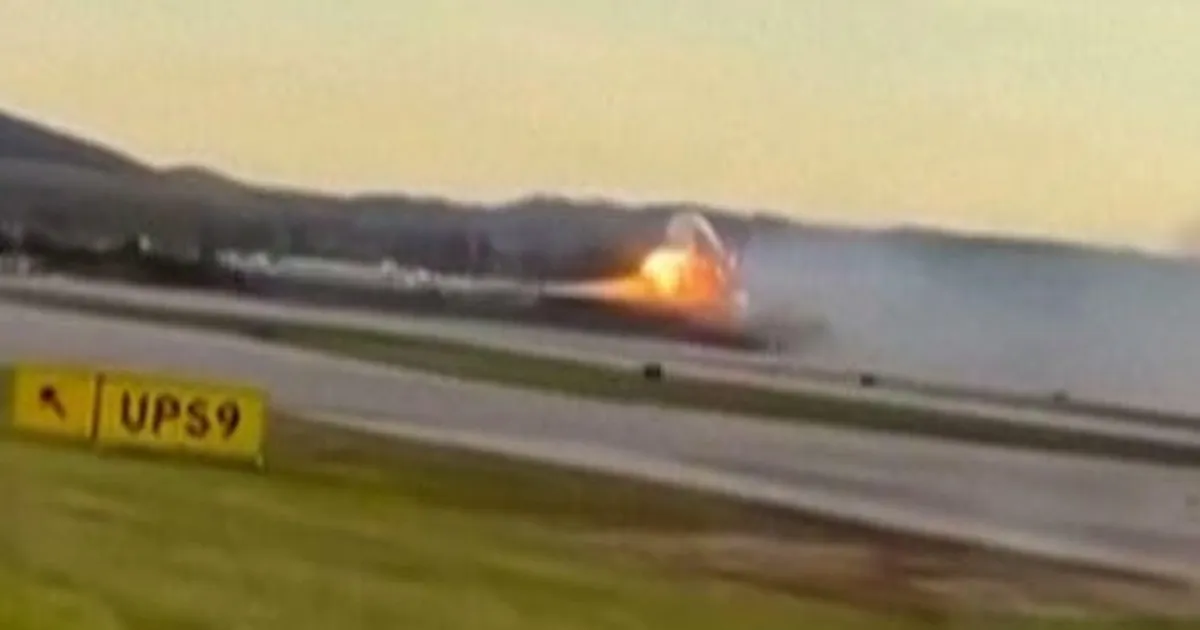
On Tuesday, a tragic UPS plane crash in Louisville, Kentucky, claimed the lives of at least nine individuals, with the death toll expected to rise. Investigators are now meticulously analyzing dramatic video footage from the scene, along with crucial voice and data recorders, commonly referred to as black boxes, which were recovered on Wednesday. These efforts are aimed at uncovering the cause of this devastating incident involving the McDonnell Douglas MD-11.
The recovered footage appears to show flames emanating from the area of the left wing, where one of the aircraft's engines is situated, as the MD-11 sped down the runway towards disaster. Eyewitness accounts and video evidence suggest that, just moments before the crash, the plane, carrying three crew members, attempted to take off despite visible flames shooting from its tail engine.
Stunning still images and aerial footage indicate that the plane's left engine detached from the aircraft during the incident, landing just off the runway. This separation raises concerns that debris from the lost engine may have been sucked into the tail engine, compounding the challenges faced by the crew. With one engine lost and the second potentially damaged or malfunctioning, experts believe the MD-11, heavily loaded with fuel and packages, would have struggled to achieve the necessary lift to take off safely.
Although the MD-11 is designed to operate with one engine, losing two engines while approaching speeds of nearly 200 mph presented an almost insurmountable challenge for the pilots. Such a scenario could severely disrupt the aircraft's weight and balance, making stable flight increasingly difficult, particularly if the wing sustained damage during the fire and engine separation.
The ill-fated flight was reportedly carrying up to 20,000 packages and approximately 255,000 pounds of jet fuel, destined for an eight and a half hour journey to Honolulu. The weight of the cargo and the fuel load would have significantly impacted the aircraft's performance and handling capabilities during the emergency situation.
The black boxes, located in the tail section of the MD-11, are typically engineered to withstand extreme conditions, making them vital for understanding the events leading up to the crash. Upon recovery, these devices will be secured and transported to the National Transportation Safety Board (NTSB) lab in Washington, D.C., for thorough examination. Despite the intense circumstances surrounding the crash, the NTSB has a strong track record of retrieving valuable data from damaged recorders.
If the data recorder remains intact, it will provide investigators with critical insights into how the 34-year-old converted airliner was operating just before the crash. Meanwhile, the cockpit voice recorder will reveal the communications and reactions of the pilots during the ill-fated takeoff attempt.
As the investigation unfolds, federal authorities will prioritize securing the left engine and analyzing the black boxes to piece together the events that led to this tragic UPS plane crash. The details unearthed during this process will be crucial in understanding the factors that contributed to this catastrophic incident.